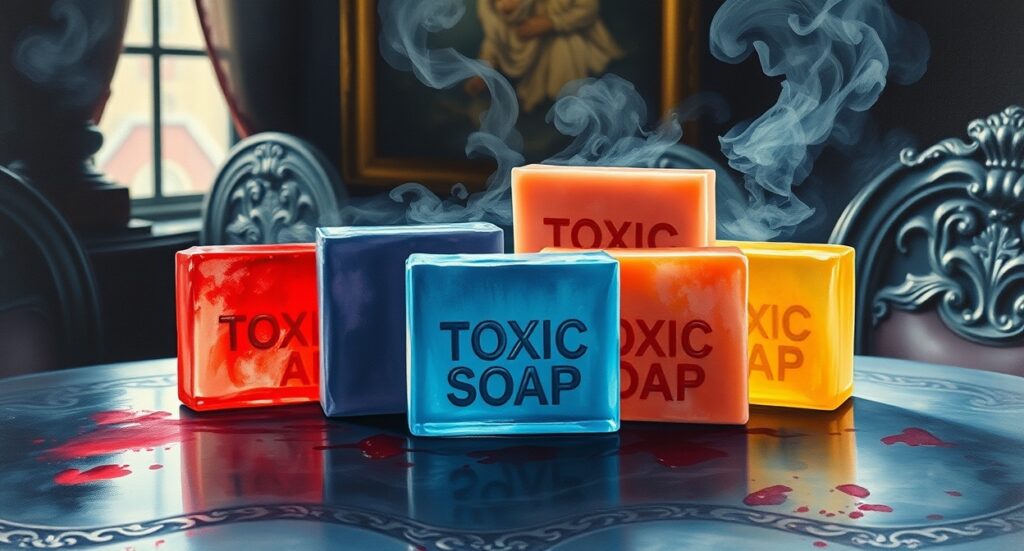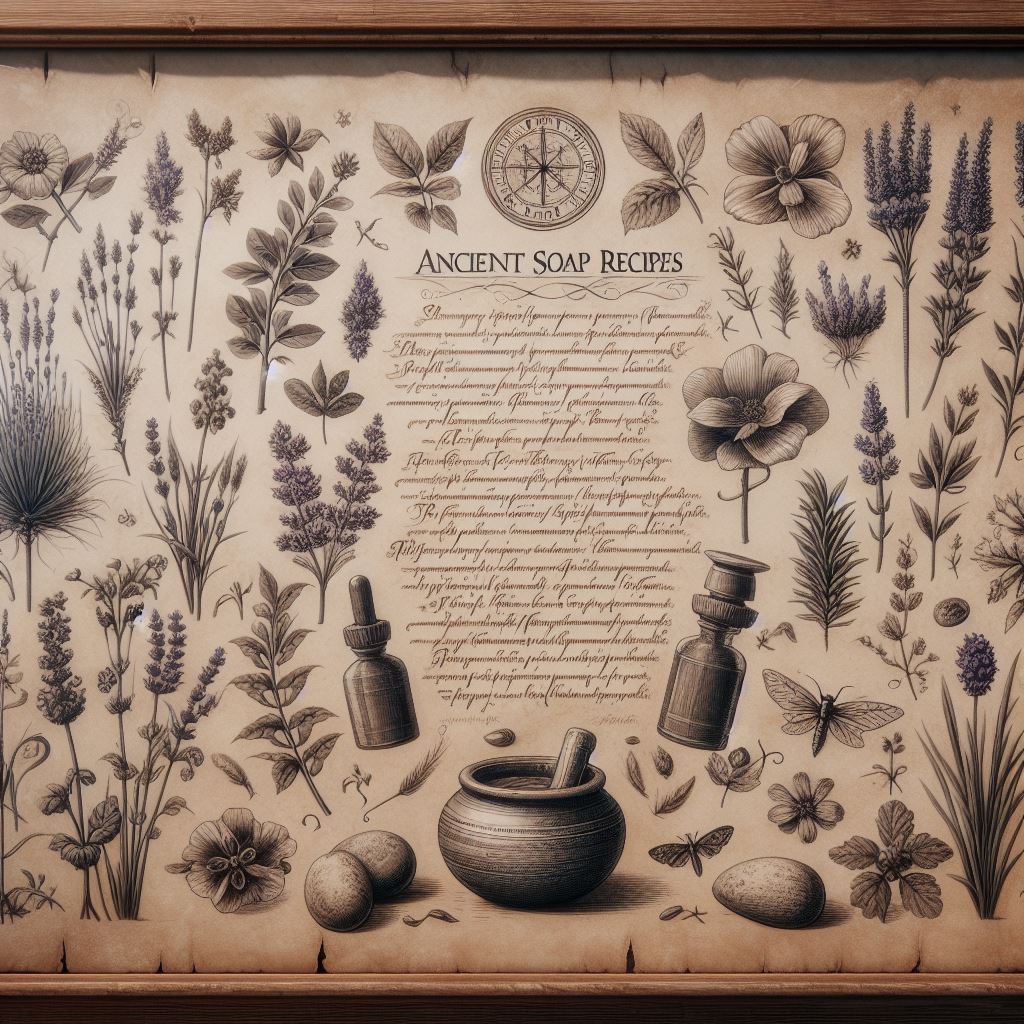Toxic Soaps

Dangerous Past Soap Ingredients and Why They’re Banned Ever wondered what went into soap centuries ago? From toxic minerals to questionable animal-based extracts, historical soap recipes were filled with substances we wouldn’t dare touch today. Dive into the fascinating—and sometimes horrifying—world of old soap-making ingredients that are now strictly off-limits. Animal-Based Ingredients: Cruel and Controversial Throughout history, animals were often at the heart of soap-making. Whether through exotic scents like musk and civet or fats sourced from slaughterhouses, these ingredients played a key role in creating lather and fragrance. Today, ethical concerns and environmental awareness have rendered these substances obsolete. Natural Musk: Extracted from the scent glands of male musk deer, musk was a prized ingredient for luxurious soaps. However, the process of obtaining musk often resulted in the death of these animals, driving them to near extinction in some areas. Today, synthetic musk provides a cruelty-free alternative. Civet: Derived from the perineal glands of civet cats, this musky scent was once used in high-end soaps and perfumes. The inhumane conditions under which civets were kept led to widespread criticism, and the ingredient has been replaced by synthetic or plant-based substitutes. Animal Fats: Fats from slaughtered animals, such as tallow and lard, were common in soap-making. While not inherently toxic, the reliance on industrial slaughterhouses raises ethical concerns. Many modern soaps now use plant-based oils, such as coconut or olive oil, as sustainable alternatives. Eichenmoos (Oakmoss): A lichen-derived ingredient with a woody, earthy scent, oakmoss was popular in historical fragrances. However, its potential to cause severe allergic reactions has limited its modern use. Mineral-Based Ingredients: A Toxic Touch of Color Minerals provided vivid pigments for historical soaps, but many came with a deadly cost. From arsenic-laden greens to cadmium yellows, these once-beloved colors are now synonymous with toxicity. Modern alternatives ensure vibrant hues without the health risks. Schweinfurter Grün (Paris Green): This vivid green pigment was made from copper and arsenic compounds. While it created stunningly colored soaps, its toxicity led to severe health problems, including poisoning from skin contact or inhalation. Auripigment and Realgar: These arsenic-based pigments produced brilliant yellows and reds but were highly toxic. Even handling these minerals could cause arsenic poisoning. Cadmium Colors: Bright yellows and reds were achieved using cadmium compounds. Cadmium is now known to be carcinogenic and highly toxic to the environment, making its use untenable. Neapelgelb (Naples Yellow): A lead-based pigment, it was once prized for its soft yellow tones. Lead poisoning risks have led to its complete ban in consumer products. Chemical Concoctions: Innovations Gone Wrong The rise of industrialization brought a wave of synthetic additives to soap-making. While some improved performance, others—like formaldehyde and phthalates—proved to be harmful to both people and the planet. These banned substances remind us of the fine line between innovation and safety. Formaldehyde: Used as a preservative in soaps, formaldehyde is now recognized as a carcinogen and a potent skin irritant. Its use is strictly regulated in modern cosmetics. Lilial (Butylphenyl Methylpropional): A synthetic fragrance ingredient once loved for its floral scent. It was banned in the EU in 2022 after being classified as toxic for reproduction. Diethylphthalate (DEP): Commonly used as a fixative for fragrances, DEP was later found to have hormone-disrupting effects. Public awareness and stricter regulations have largely phased it out. Ethanolamines (DEA, MEA, TEA): Used as pH stabilizers and foaming agents, these substances can react with other ingredients to form nitrosamines, which are carcinogenic. Salts and Acids: Corrosive and Harmful Borax: A common water softener and emulsifier, borax is now classified as a reproductive toxin and is banned in many countries for use in cosmetics. Chlorinated Lime: A mix of calcium hydroxide and calcium hypochlorite, this was used as a bleaching agent. It’s highly corrosive and poses serious risks to skin and eyes. Sodium Hypochlorite: Essentially liquid bleach, it was used in cleaning and whitening soaps but is highly irritating and unsafe for regular use. Sulfurous Acid: Used as a bleaching agent, it caused skin irritation and respiratory issues. Oxalic Acid: Historically used for bleaching, this acid is highly toxic if ingested and can cause skin burns on contact. Nitric Acid: Occasionally used in industrial soap-making, its highly corrosive nature made it too dangerous for continued use. Conclusion: The history of soap-making is a journey through trial, error, and, sometimes, danger. While early soap-makers sought to innovate, their reliance on harmful ingredients often came at a cost to health, safety, and ethics. Today, modern formulations prioritize both effectiveness and consumer well-being, ensuring that soap no longer poses hidden risks. By understanding the past, we can better appreciate the progress that has led to the safe, sustainable products we use today.
SOAP-ER KNOWLEDGE

Soap-er Knowledge Here you’ll find all blog posts about the history of soapmaking. AllgemeinHistoryTutorial Ancient soap recipes Read More HPTutorial Hot Process soaping – generations ago! Read More ChemistryHistory Carbonate Soaps Read More AllgemeinHistory Soapmaking in the centuries Read More
OFFBEAT SOAPING

Offbeat soaping Here you will find everthing about offbeat soaping. AllgemeinOffbeat Soaping Offbeat soaping AllgemeinHistoryOffbeat Soaping Alchemy in Soaping
Oldest known soap recipe!
Overlay mit Bild Oldest known soap recipe An approximate translation of the ancient Babylonian soap recipe. Ingredients: Water Ash from a fire Rendered animal fat or vegetable oil Instructions: Collect the ash from a fire and mix it with water. Boil the mixture to create a concentrated liquid. Melt the animal fat or vegetable oil in a separate container. Mix the concentrated ash liquid with the melted fat or oil. Allow the mixture to cool and solidify. Cut the solidified mixture into bars for use. Note This recipe is approximate, as the original recipe was written in ancient cuneiform script and may have included additional instructions or ingredients that have been lost over time. The exact proportions of the ingredients and the specific method of preparation may also have varied depending on the individual soap maker.
Alchemy in Soaping

Alchemy in soap making Magical Ingredients in Ancient Soap Formulations: Unveiling the Alchemy of Cleansing The formulations of ancient soaps continue to astound with their inclusion of exotic ingredients that transcend the simple blends of fats and ashes. Across diverse cultures, a belief persisted that specific plants, herbs, or minerals possessed magical cleansing properties. The addition of these mystical elements transformed the act of soap-making into a ritualistic and spiritual endeavor. The Mystical Art of Soap-Making in Ancient Egypt In ancient Egypt, renowned for its advancements in various sciences, soap-making took on a particularly magical quality. The use of natron, a naturally occurring mixture of sodium carbonate and sodium bicarbonate, was prevalent in their soap recipes. Natron was not merely a cleansing agent; it held sacred significance, believed to have purifying properties that extended beyond the physical realm into the spiritual. The Spiritual Alchemy of Soap-Making in Ancient China In ancient China, soap-makers explored the magical properties of herbs like ginseng and lotus. These botanical elements were thought to enhance the soap’s ability to cleanse not just the body but also the spirit. The subtle fragrances of these ingredients were considered conduits for positive energy, creating a holistic cleansing experience. Alchemy of the Ages: European Soap-Making and Mystical Ingredients Interestingly, in the Middle Ages, European alchemists sought to combine the mystical with the practical in soap production. Substances like frankincense and myrrh, long associated with spiritual rituals, found their way into soap recipes. The belief was that these aromatic additions elevated the soap’s purifying effects to a higher, almost divine level. Unveiling the Mystical Legacy of Ancient Soap-Making The use of gemstones was not uncommon in some ancient soap formulations. In India, for instance, soap-makers integrated powdered gemstones like amethyst or moonstone, believing that the energy stored in these precious stones could transfer to the soap, imparting a sense of balance and tranquility during the cleansing process. Beyond botanicals and minerals, animal products also played a role in magical soap-making. In certain African cultures, the fat of specific animals, believed to embody unique spiritual qualities, was incorporated into soap recipes. This practice underscored the interconnectedness of the physical and spiritual realms in the art of soap-making. These examples illustrate the diverse ways in which ancient civilizations infused their soap formulations with magical elements. The alchemy of soap-making went beyond mere cleanliness; it was a conduit for connecting with the metaphysical and the divine. These examples illustrate the diverse ways in which ancient civilizations infused their soap formulations with magical elements. The alchemy of soap-making went beyond mere cleanliness; it was a conduit for connecting with the metaphysical and the divine. Intriguingly, these beliefs and practices persisted for centuries, shaping the cultural and spiritual significance of soap. While modern soap production is grounded in scientific understanding, exploring the mystical roots of this everyday item adds layers of fascination to its history. The magical ingredients of ancient soaps not only cleansed the body but also offered a glimpse into the spiritual tapestry woven into the fabric of daily life.
Ancient soap recipes

Unlocking the Secrets: Discover Vintage Soap Recipes Stay tuned as I unveil a treasure trove of soap recipes sourced from ancient books. Join me on this journey of rediscovery as we delve into the art of soap-making from generations past. Get ready to craft your own timeless creations! Honey Halfpalmsoap, Recipe from 1860 250 parts Lard 150 parts Palm oil 50 parts Coconut Oil 50 parts Colophony Die Darstellung der vorzüglichsten feinen Toilette – Seifen Substitute for Olive oil soap, Recipe I from 1867 30 parts olive oil 30 parts poppy seed oil or peanut oil 40 parts bovine fat Handbuch der chemischen Technologie, Band 6, Page 28 Substitute for Olive oil soap, Recipe II from 1867 30 parts olive oil 40 parts poppy seed oil or peanut oil 30 parts lard Handbuch der chemischen Technologie, Band 6, Page 28 Substitute for Olive oil soap, Recipe III from 1867 50 parts palm oil 30 parts sesame oil 20 parts bovine fat Handbuch der chemischen Technologie, Band 6, Page 28